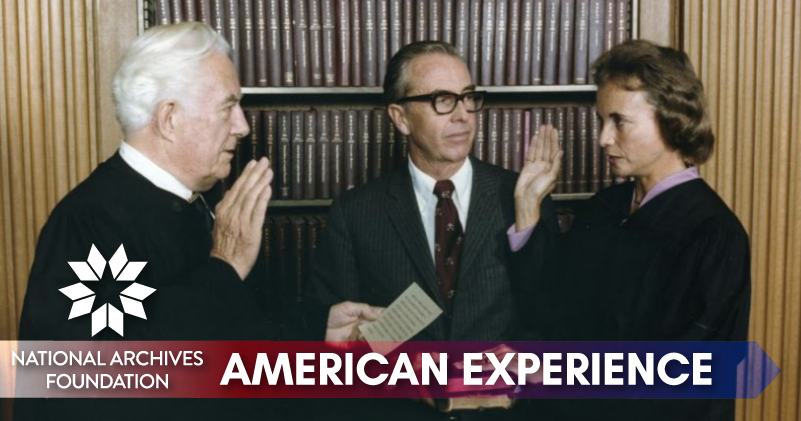Archives Experience Newsletter - September 28, 2021
All Rise: Judicial Trailblazers
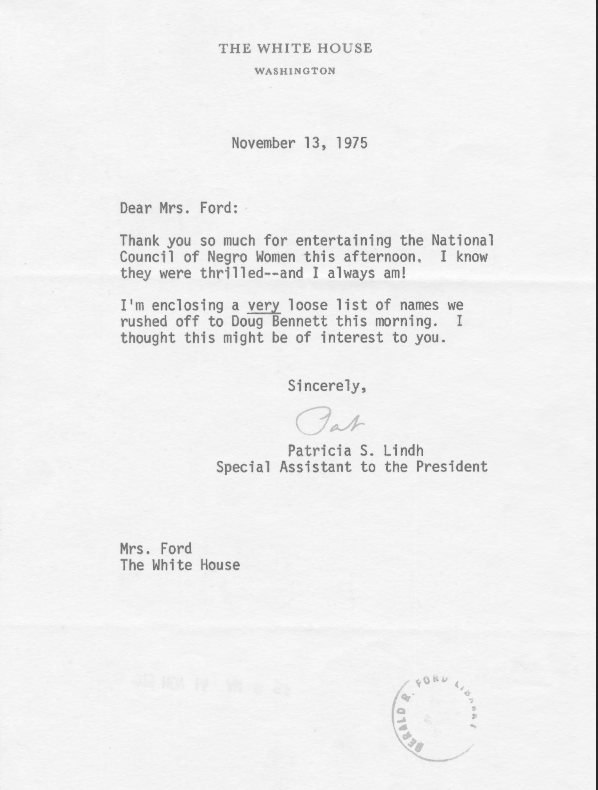
“unrefined list”
National Archives Identifier: 81556879
In Greek mythology, justice is depicted as a woman – enforcing rules, order, and fair judgment. Often in paintings and sculptures, we see a woman blindfolded, holding scales and a sword. Peek into courtrooms and judicial buildings around the U.S., and you will see many versions of Lady Justice.
Still, very few women have broken the ultimate glass ceiling in the legal world – sitting on the United States Supreme Court. Only five justices (so far!) have been women.
In 1975, William O. Douglas, who had been appointed to the Supreme Court by President Franklin Delano Roosevelt thirty-six years earlier, was retiring. First Lady Betty Ford encouraged her husband, President Gerald Ford, to consider an “unrefined list” of women attorneys and judges she had created. Instead, President Ford opted to fill the open seat with John Paul Stevens, and the Supreme Court remained in its unaltered, all-male state until President Reagan nominated Sandra Day O’Connor in 1981.
This week, we study and celebrate the women who bring their voices to the highest bench in the land.
⚖️

Patrick Madden
Executive Director
National Archives Foundation
P.S. Don’t forget to join us online on October 5 at 5 p.m. for a conversation with the director of the Jimmy Carter Presidential Library, when we will talk about President Carter’s birthday plans this year and what’s new at his Atlanta museum. Register here.
An Independent Woman
Judge O’Connor’s
Policy Positions
President Ronald Reagan nominated Sandra Day O’Connor, who was a judge in Arizona at the time, as an Associate Justice to the United States Supreme Court on August 19, 1981. Reagan had promised to nominate a woman to the court while he was campaigning for President. Despite opposition by pro-life activists and several Senators, theSenate confirmed O’Connor’s nomination on September 21 with a vote of 99 to 0.
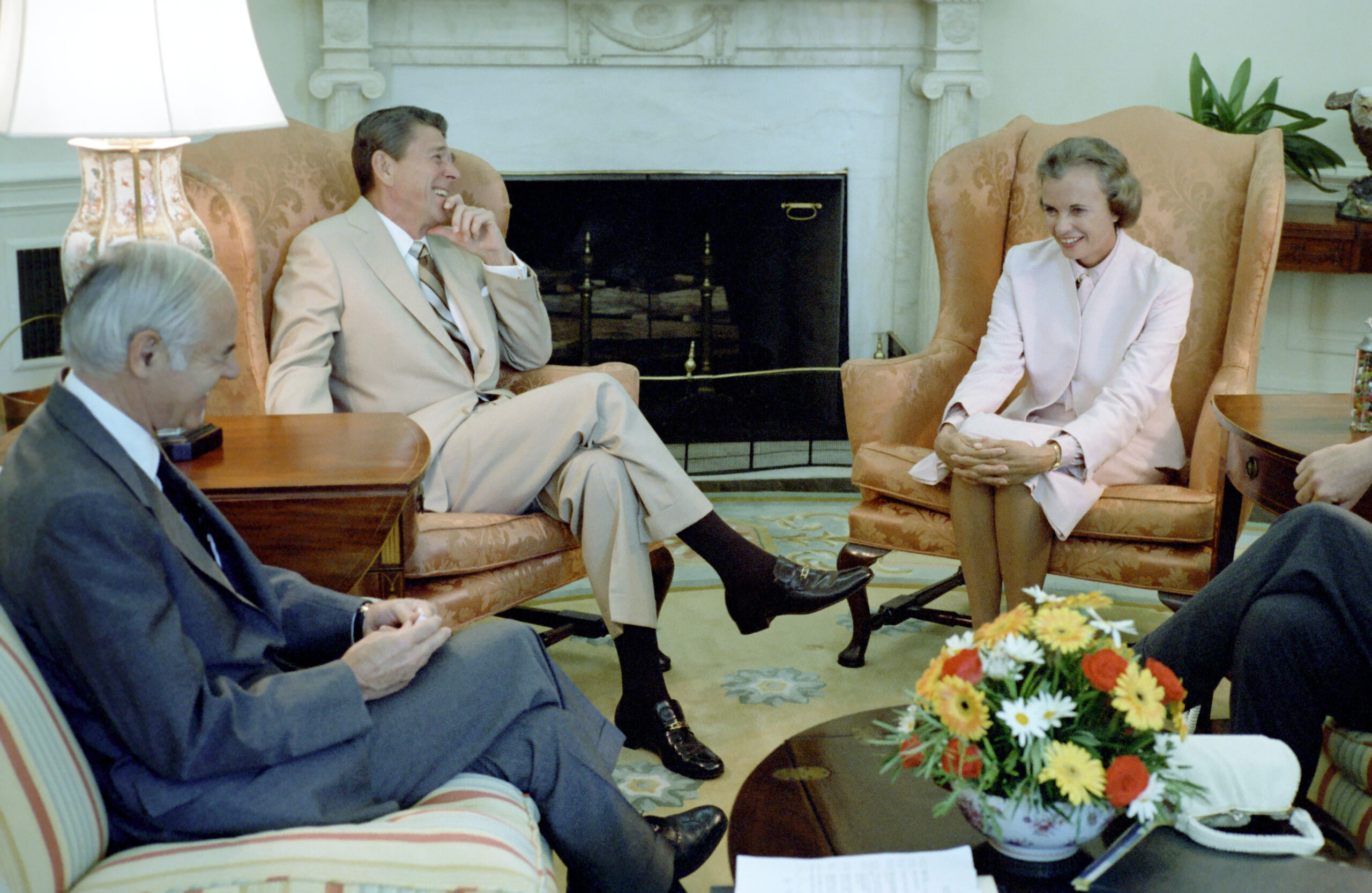
visits the Oval Office
O’Connor proved to be an independent and rigorous justice. Initially, she frequently voted with Chief Justice William Rehnquist along conservative lines. Later, when the additions of Justices Anthony Kennedy and Clarence Thomas shifted the makeup of the court toward a more conservative stance, O’Connor often cast the swing vote that determined the outcome of the court’s decisions. Some important cases in which her vote made the difference are McConnell v. FEC (2003), which upheld the constitutionality of most of the McCain-Feingold campaign-finance bill regulating “soft money” contributions; Grutter v. Bollinger (2003) and Gratz v. Bollinger (2003), which affirmed the constitutionality of the University of Michigan Law School’s affirmative action admissions program; and, probably most famously, Bush v. Gore (2000), which determined the outcome of the 2000 presidential election.

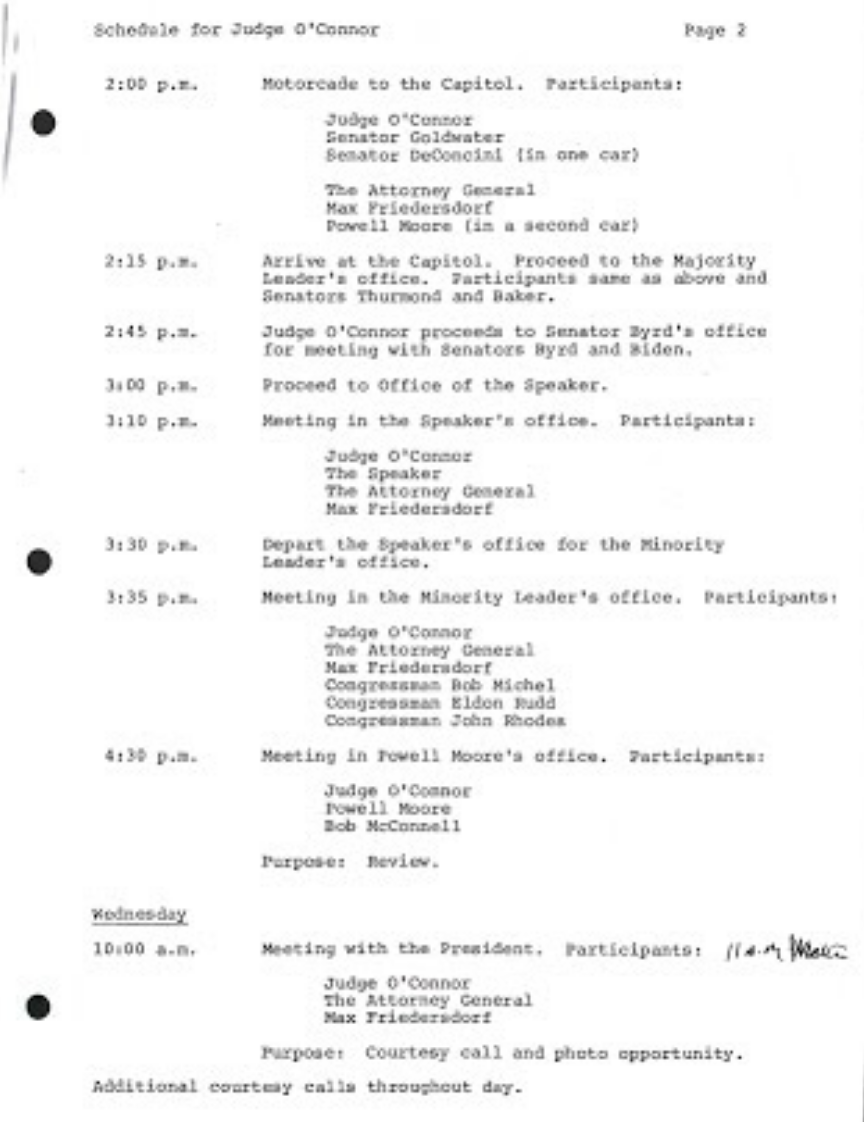
schedule for Judge O’Connor’s
visit to Washington D.C.
Justices who are appointed by the President of a certain party don’t necessarily stick to that ideology forever. Lifetime appointments could be responsible for this, as well as the insistence of almost all justices that the Court is not a political body.
I Dissent

in Shelby v. Holder
Notorious RBG at the National Archives
in NARA’s Prologue blog
Appointed to the Supreme Court by President Bill Clinton in 1993, Ruth Bader Ginsburg was widely revered for her stalwart support of women’s rights and closely reasoned legal opinions. Before she was appointed to the Supreme Court, she successfully argued six cases before the court—all of them dealing with sex discrimination. Once she was seated on the court, Ginsburg voted to protect voting rights and to eliminate differences in pay between men and women doing similar jobs. She also worked with President Barack Obama to draft and secure passage of the Lilly Ledbetter Fair Pay Act of 2009.

Standing five feet tall and rocking a wide variety of lace collars over her judicial robes, Ginsburg was dubbed “the Notorious R.B.G.” after she wrote pointed dissents to Supreme Court rulings such as that in Shelby County v. Holder, a landmark voting rights case in which she wrote that gutting the Voting Rights Act would be “like throwing away your umbrella in a rainstorm because you are not getting wet.” The “Notorious” nickname somewhat ironically relates her to rapper Biggie Smalls, who also hailed from her home of Brooklyn, New York. She became increasingly present in the public arena when matters such as her workout routine and her friendship with Justice Anthony Scalia, one of the most stalwart conservatives on the court, became public knowledge.
But Ginsburg became an icon because of the obstacles she overcame during her ascent to the Supreme Court, her penchant for hard work, and her unstinting advocacy for women’s rights. “You can’t have it all, all at once,” she said in 2014. “Who—man or woman—has it all, all at once? Over my life span I think I have had it all. But in different periods of time things were rough.”
She certainly knew from her own experiences. She faced unrelenting gender discrimination throughout her early career, starting when she, a graduate of Cornell University, could only get a job as a typist in Oklahoma, where she and her husband, Martin Ginsburg, were stationed while he completed his military service. When they both enrolled in Harvard Law School, Ruth Bader Ginsburg was one of nine women in a class of more than 500. She eventually transferred to Columbia, where she graduated at the top of her class, but she still could not find a job at a law firm. She finally got a break when a former professor, Gerald Gunther, recommended her for a clerkship with Judge Edmund Palmieri. From there, she got a teaching job at Rutgers University in 1963 and began her unceasing campaign to outlaw sexual discrimination. Notably, she was also the first Jewish woman to serve on the Court.
The First Latina Justice

National Archives Identifier: 118817965
The third female Supreme Court Justice, Sonia Sotomayor is also the first justice of Hispanic and Latina descent to serve on the court.
Sotomayor was born in the Bronx to working-class Puerto Rican parents in 1954. She graduated from Princeton with a history degree and acquired her law degree from Yale University.

in NARA’s Text Message blog
Justice Sotomayor has had a long career on the bench enjoying bipartisan support. She was first appointed to the U.S. District Court by President H. W. Bush in 1992, and was unanimously confirmed by the Senate for that position. At the time, she was the youngest judge on that court until she was elevated to the U.S. Second Circuit Court of Appeals by President Clinton on her 43rd birthday.

President Barack Obama nominated Sotomayor to the Supreme Court on May 26, 2009; the Senate confirmed her on August 6 of that year. Her tenure on the bench has been marked by her passionate support of women and minorities and her defense of the Affordable Care Act and same-sex marriage.
History Snacks
Dressing Up
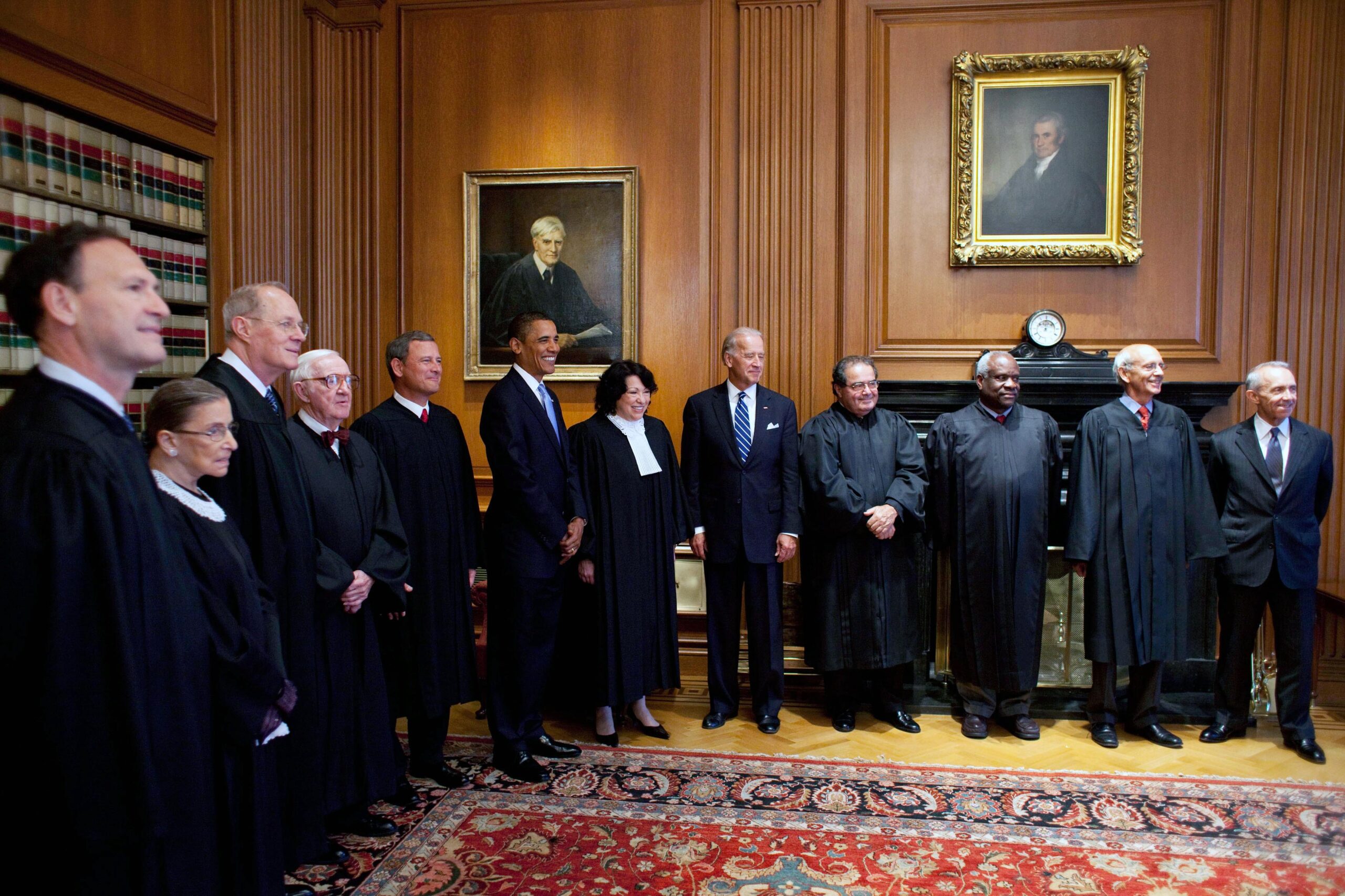
When Ruth Bader Ginsburg joined the Supreme Court in 1993, Sandra Day O’Connor had been the lone female justice since 1981. The two of them conferred and came up with the idea of wearing lace collars with their judicial robes. The traditional robe is designed to be worn with a man’s shirt and tie, but the women on the court decided to wear laceas an expression of their femininity.
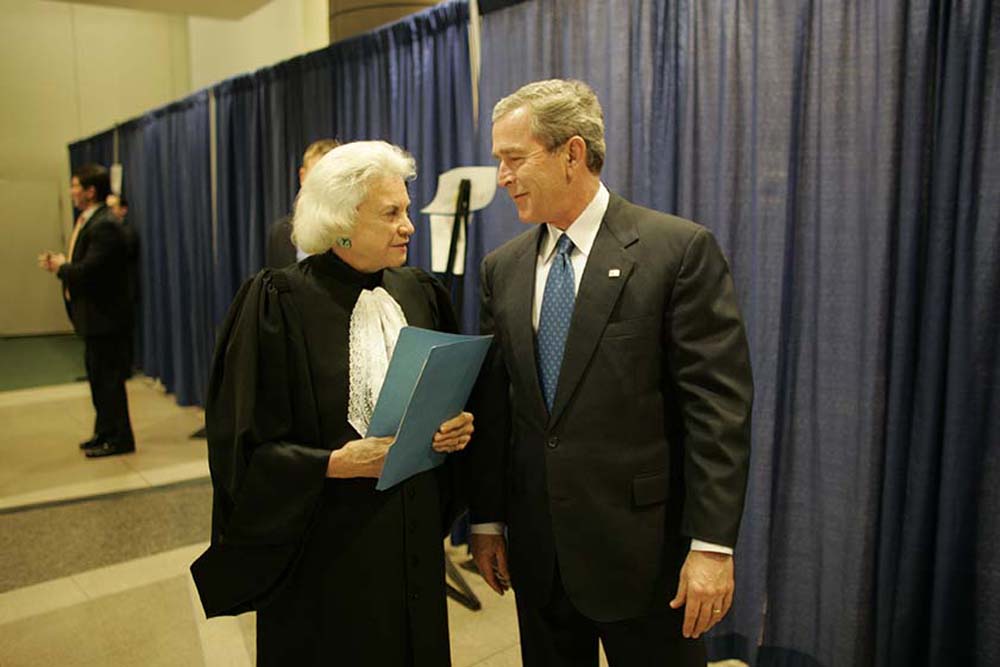
National Archives Identifier: 171487281

National Archives Identifier: 66788720
Lace may be fragile, but anyone who dismissed these two justices because of their gender was in for a rude awakening. Both of them were famously stringent and principled in their interpretations of the Constitution.
A New Judge
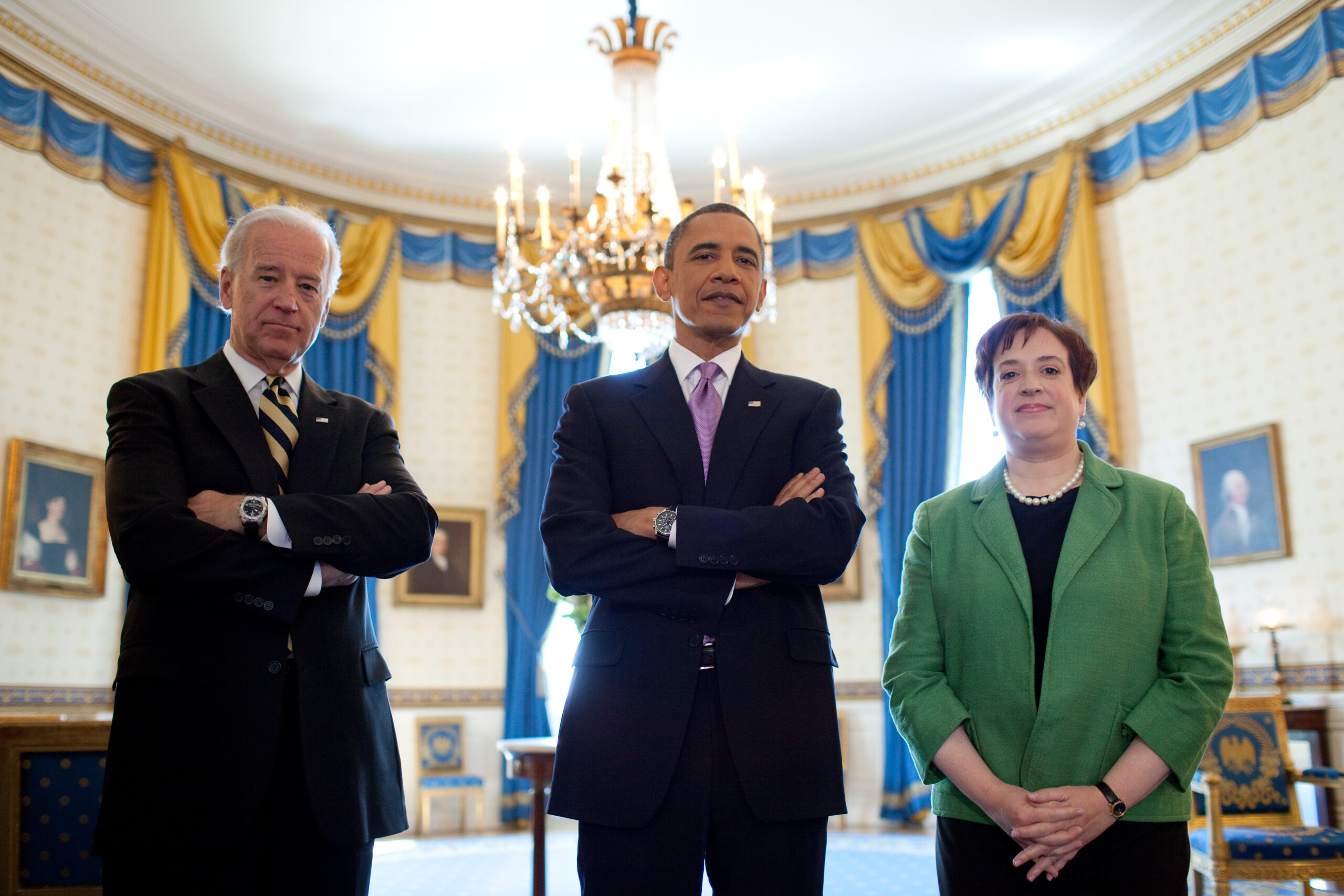
Born in Manhattan and educated at Princeton, Oxford University, and Harvard Law School, Elena Kagan holds the rare distinction of not having argued a case before any court prior to her appointment as Solicitor General of the United States in 2009. After graduating from law school and clerking for Supreme Court Justice Thurgood Marshall, she taught at the University of Chicago Law School, where she met future U.S. President Barack Obama. President Bill Clinton hired her to be the Associate White House Counsel, in which position she served from 1995 to 1996, and then as Clinton’s Deputy Assistant to the President for Domestic Policy and Deputy Director of the Domestic Policy Council from 1997 to 1999. Clinton then nominated her to the Supreme Court in 1999, but the Senate took no action, and her nomination lapsed.

National Archives Identifier: 176550990
Kagan then became Dean of Harvard Law School, where she served until 2009, when President Barack Obama chose her to be his Solicitor General, the first woman to serve in the role. In that capacity, she argued six cases before the Supreme Court. In May 2010, Obama nominated herto the Supreme Court, and the Senate confirmed her on August 5 of that year.
160,000 pages to go
in NARA’s Pieces of History blog
Kagan’s papers are in the process of being digitized—the Archives estimates that they only have 160,000 pages to go.
Press Release
Materials Relating to Sonia Sotomayor Released





